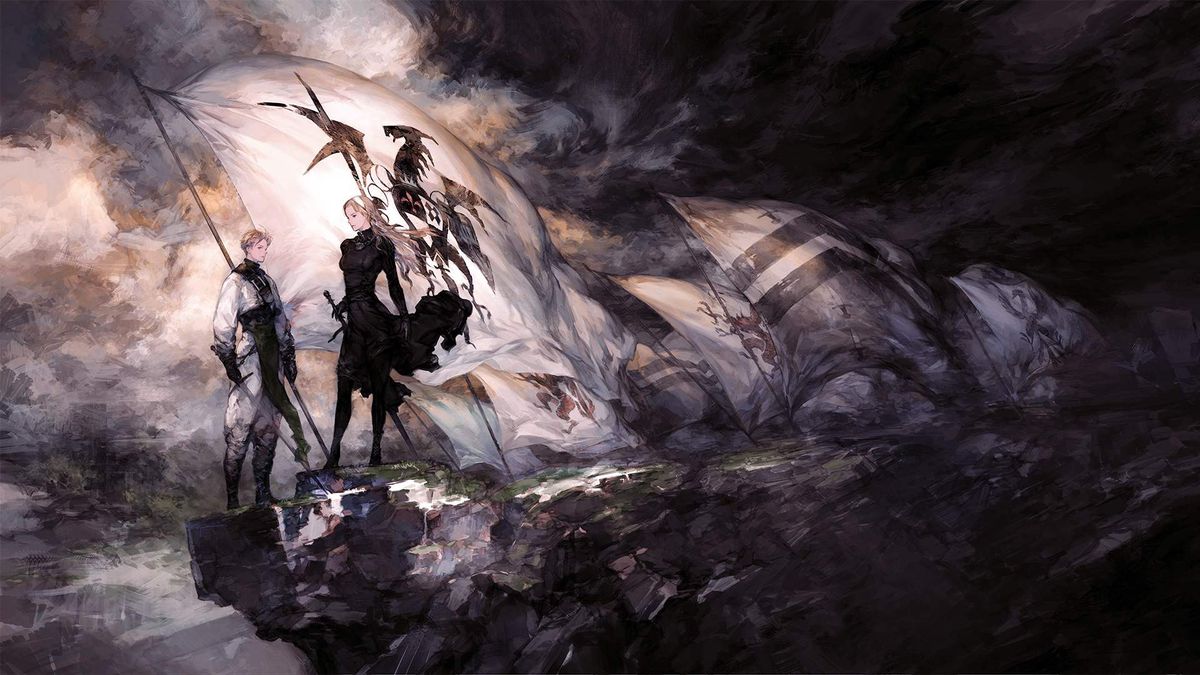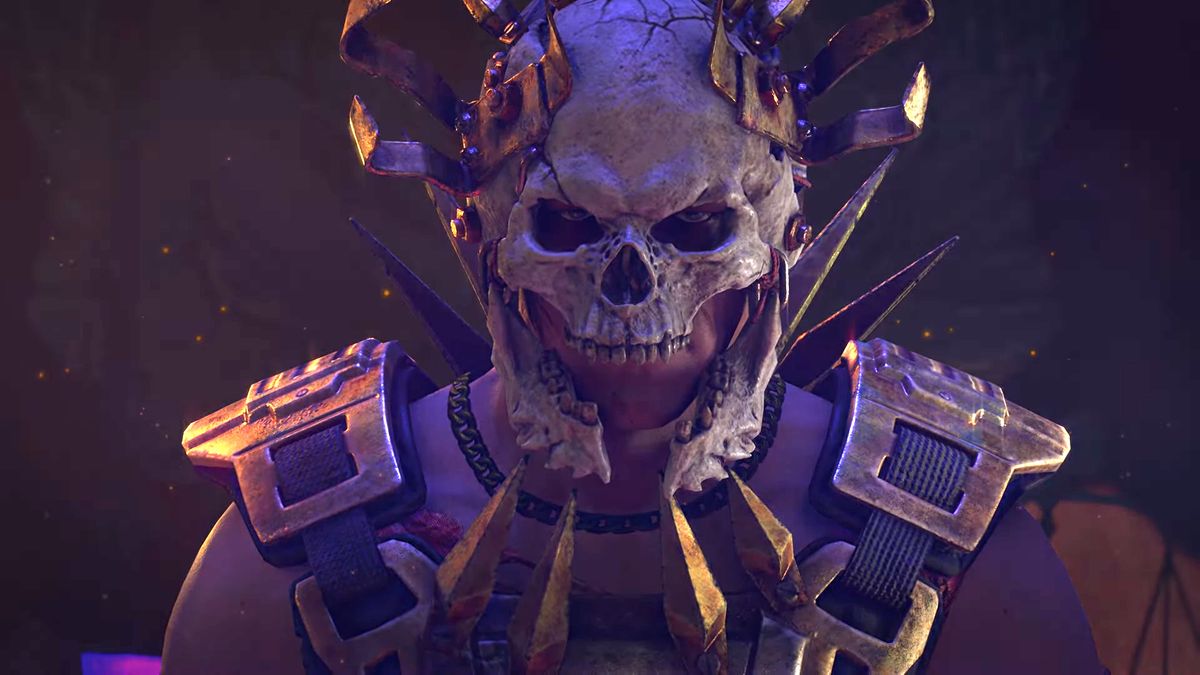Need to know
What is it? A tactical RPG classic, the progenitor to Final Fantasy Tactics.
Release date: November 11, 2022
Expect to pay: £40/$50
Developer: Square Enix
Publisher: Square Enix
Reviewed on: Intel Core i7-10750H, 16GB RAM, GeForce RTX 2060
Multiplayer? No
Link: Official site
Square Enix’s deep-dive into its archive is finally delivering something for tactical RPG fans. No, not Final Fantasy Tactics. The other beloved isometric game with Tactics in its title, as Tactics Ogre has finally been rescued from its PSP oblivion. It’s the game TRPG hipsters will tell you is the best TRPG, and it certainly got a lavish upgrade when it was ported to Sony’s handheld back in 2010.
If you’re unfamiliar with the original game—which first came to the SNES way back in 1995—it basically established the tactical RPG as we know it today, in its isometric configuration at least. Final Fantasy Tactics, Disgaea and my beloved Vandal Hearts wouldn’t exist without its mix of grounded fantasy politics and Q*bert-esque battle maps. The game also cemented the Yasumi Matsuno house style, with the director/writer/designer going on to work on Final Fantasy Tactics and FF12.
It’s a simple but appealing game beneath the bells and whistles of the later editions, notable for its almost Game of Thrones-esque fantasy squabbling and chunky battle maps, which turned the flat battlefields of its contemporaries into gorgeous 3D dioramas. There’s an inherent joy to moving units and flinging arrows across the battlefield, and it persists in Tactics Ogre: Reborn, which has reworked the enemy AI so that it now puts up a fair yet challenging fight. Every battle kept me on my toes, thinking tactically with every action—not just mindlessly advancing across the map.
So there are more considerations other than simply destroying your enemies. One early hump is a battle against a necromancer in a towering keep, whose defeated skeletons can return to life, and who only summons more of the blighters if you dawdle. Your mission isn’t to defeat them all, however, but to pick your way through them to the man himself, weathering spells that will gouge huge chunks out of your units’ health.
Keep up
Advancing through the cramped battlefield is a puzzle in itself, and I had to make use of all my units’ varied abilities. Canopus, my winged angel man, ascended quickly up the side of the keep, taking potshots before retreating to heal up. Denam, my knight equipped with Reborn’s new Rampart Aura skill, used it to trap enemies in place, letting my Rune Fencer squeeze through the exposed gap. Donnalto, the cleric with his essential Exorcism spell, can double-kill those skeletons, while Claudia is able to keep his feeble frame healed up.
It was a solid plan, and it eventually worked—when I wasn’t waylaid by the stat cards that drop seemingly randomly as battles go on. These lure you onto certain tiles with the promise of a temporary (or, very occasionally, a permanent) stat boost. That is, if you can reach them before Reborn’s equally stat-hungry enemies. Can you afford to spend a turn to gather that melee attack card? Or can you somehow push an enemy into that debuff card instead? These boosts make a notable difference, but sometimes you just need to stick to your guns and focus.
There are more complex tactical RPGs around these days—look to the Disgaea series if you want systems on top of systems on top of prinnies—but when it comes to the essentials of isometric, turn-based combat, Tactics Ogre: Reborn is rigorously fine-tuned and tactically diverse. The master is still the master after all these years.
Of course, there are a lot of bells and whistles on top of the original combat system, most of them added in the 2010 PSP release. The most notable is the Chariot Tarot system, which is essentially a glorified undo button that lets you rewind to attempt a different course of action. It’s a generous mechanic, storing the last couple of dozen turns and allowing you to seamlessly hop back to any of them from a pop-up menu. Try out different plans without having to save and reload endlessly, or just use it as a way to replay exciting moments.
There’s also the World Tarot system, in which you can do essentially the same thing but with the story. Once it has been unlocked, you can jump back in the timeline to branching story moments and take the characters down different paths—and this is a game rife with story divergences, where even minor choices can affect the availability of characters.
Camera obscura
A less grand but more useful feature is the ability to change the camera angle to a top-down view that really helps out in cramped spaces and affords a better overview of the battlefield. You can also zoom out so you can see more of the map, or all of it at once, though you’ll need to squint. You can’t rotate the scene, as I don’t think it’s entirely three-dimensional, but this combination of camera options works well enough.
You’ve probably noticed from the screenshots that the crunchy pixel art of the PSP game has been smoothed out, seemingly with a rusty trowel, as Square Enix has expanded it onto modern screens. The characters look weirdly rounded, and the background textures have lost a lot of their crispness and detail. Particularly when you’re playing zoomed-in—or all the time when you’re watching a cutscene—Reborn can be a remarkably ugly game.
The smoothing effect can’t be turned off. I’ve checked the menu, in disbelief, several times. I’m not sure how much better the unfiltered, low-res pixel art of the PSP game would be in this context, but Reborn’s Vaseline-smear compromise is disappointing. The newly blurry, smoothed-out pixel art clashes with the high-res character art and in-game menus, ultimately making the game an aesthetic mess.
Thankfully, many of the other changes made for Reborn are for the better. That new ability I mentioned earlier, the Rampart Aura skill, is part of a wider revamp of Tactics Ogre’s skills and levelling systems, with individual characters now levelling up instead of classes, all the better to differentiate your soldiers. The tangled web of spells and skills of the previous version has been streamlined, too, with all abilities now requiring a common resource, MP, to use.
Excessive grinding is no longer possible thanks to the removal of random world map encounters (you can now fight optional training battles), and the introduction of a level cap, which steadily increases as you complete story missions. I’ve not played the PSP version, so I can’t tell you if these changes are definitively for the better, but the result is a fair yet challenging game where you need to tinker with characters to overcome battles—and where the game makes that easy, most of the time.
Reborn again
There are a few changes that I love that would make any tactical RPG better. You can now scout maps ahead of battles: an option that lets you glimpse the upcoming battlefield and the placement of enemies, so you can tailor your army composition to suit. You can also save multiple party formations in a bunch of easily swappable quick slots, so you don’t have to tediously pop units in and out before every battle.
Tired of the first few turns of combat, when you’re doing little more than moving units forward and waiting while the enemy does the same? Activate the new AI mode—on individual units, or your entire party—telling each to focus on attacking, defending, ranged attacks or healing as appropriate. Now sit back, slurp your tea, and cross your fingers as the computer fights the battle for you.
I only dabbled with the AI system, as there was no way to tell my units to trample over each other to hoover up dropped treasure and stat bonus cards, but it seems capable enough, and it significantly speeds up battles when even one or two of your soldiers is left to their own devices.
As does the new fast-forward setting, which lets you double the speed of battle at the click of a button. I turned it on after the first few battles and only turned it off to compare it for this review. Now I need it in every tactical RPG. All it does is speed up the movement and animations, and not by so much that it looks comical, but it notably reduces the inherent sluggishness of many tactical RPGs, where we spend a lot of time just watching animations happen.
I’ve saved the best addition for last: the new orchestral soundtrack, which puts the smeary pixel art to shame with its exquisite rendering of Tactics Ogre’s original score. The music does a lot of the heavy lifting in terms of selling the story—the struggles of a group of friends as they attempt to reclaim their homeland—and in emphasising the excitement and tension combat. The excellent English localisation—carried across from the PSP game—is the perfect accompaniment to it, with a talented voice cast giving life to a typically ornate script by (frequent Matsuno collaborator) Alexander O. Smith, and Joseph Reeder.
It’s a shame that the ugly pixel art is stuck in the middle, but it’s not enough to dim Reborn’s more successful, subtler changes. Hardcore tactical RPG fans are already onboard, of course, but if you’re curious about Japanese tactics games and wondering if Tactics Ogre: Reborn is a good place to start? Yes, by God, yes. It’s the grandfather of the genre, and now it has returned to show the pretenders how it’s done.
The Verdict
86
Tactics Ogre Reborn
Though slightly tarnished, Tactics Ogre: Reborn is still a tactical RPG jewel.


